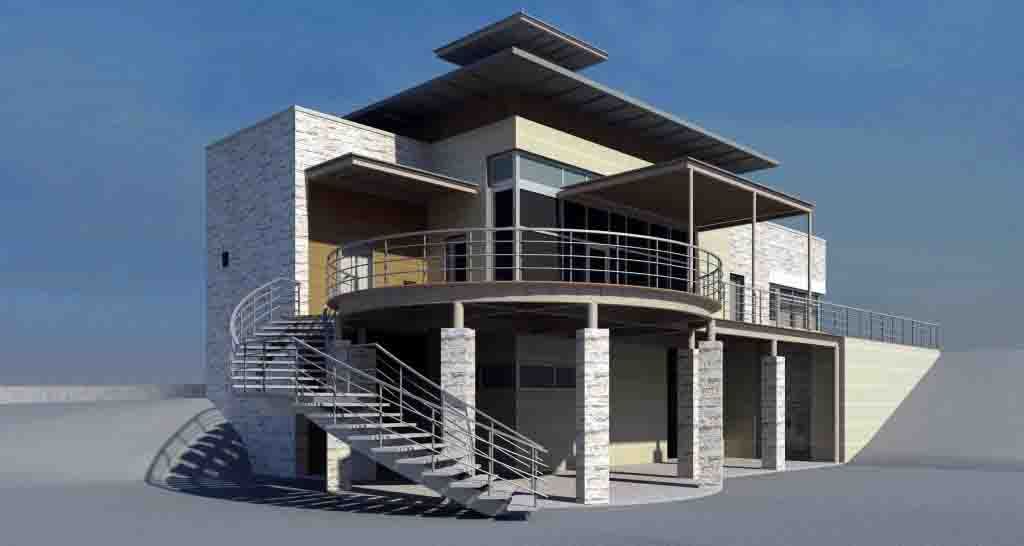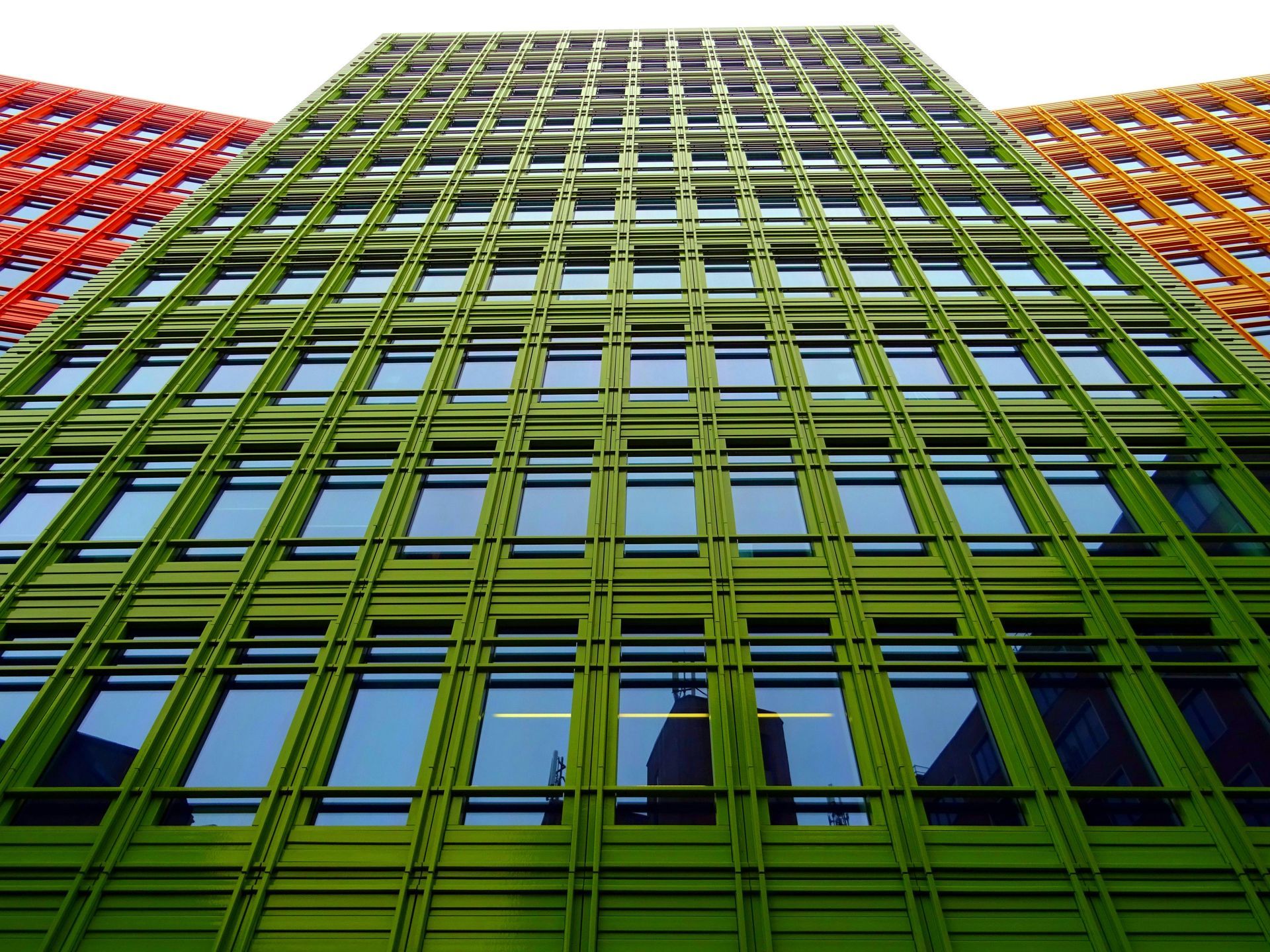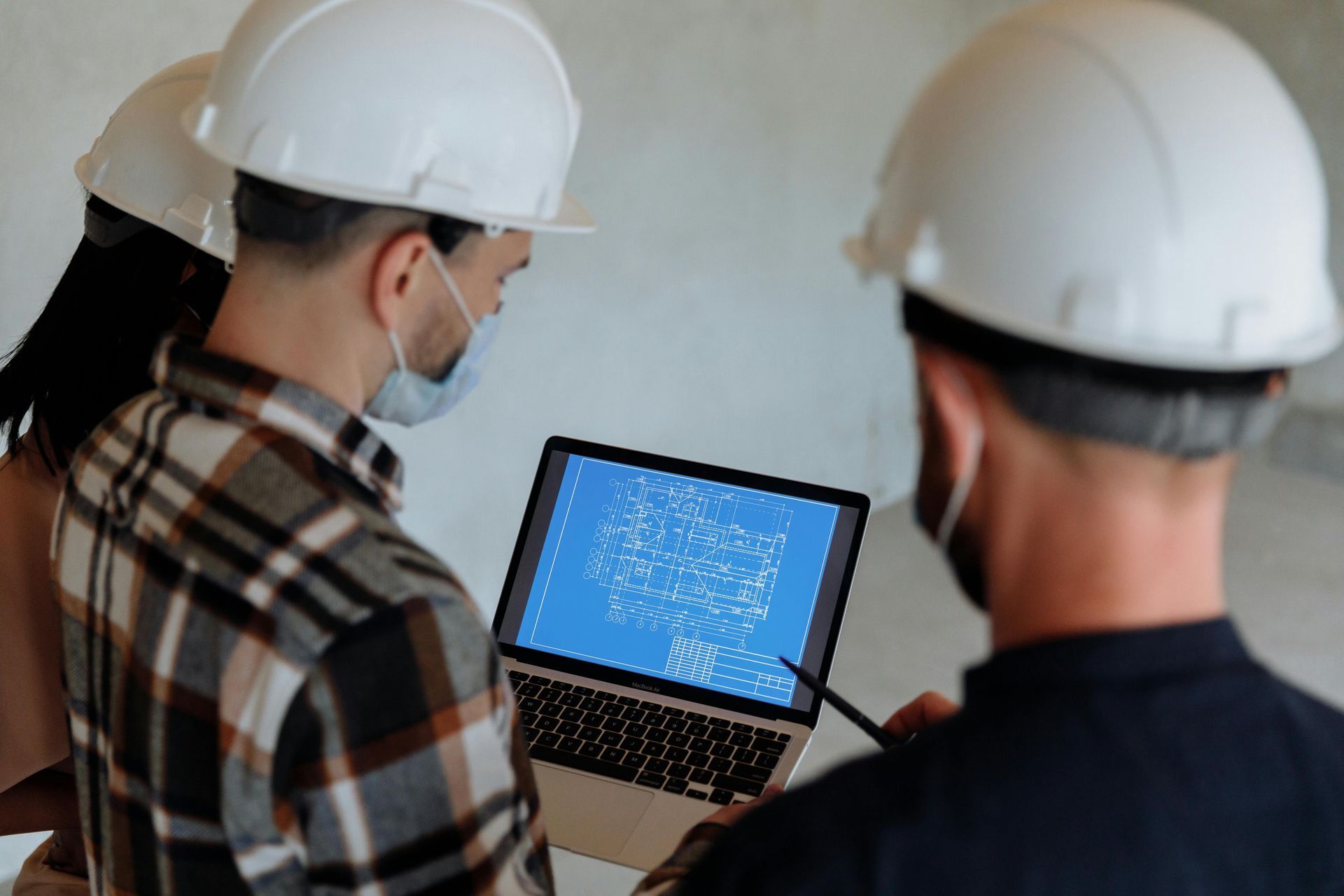The Role of LEED Certification in Sustainable Dallas Architecture
Achieve LEED certification in Dallas with expert consulting from Archline. We help architects and engineers design sustainable, code-compliant, high-performance buildings.

In the Dallas–Fort Worth (DFW) metroplex, sustainable design isn’t a checkbox—it’s a competitive advantage. Owners, public agencies, and corporate tenants now expect buildings that use less energy and water, protect indoor air quality, and publish verifiable performance data. LEED® (Leadership in Energy and Environmental Design) has become the most recognized way to prove it. For Dallas projects—from Uptown office towers and Plano tech campuses to Frisco municipal buildings and Fort Worth cultural renovations—LEED certification signals lower operating costs, healthier interiors, and a credible ESG story.
At Archline, LLC, we consult exclusively for architects and engineers. Our job is to map a realistic LEED pathway, embed it in drawings/specs and BIM, and manage the documentation so your project hits its target—without derailing budget, schedule, or design intent.
Why LEED matters in DFW right now
- Energy price swings: Texas peak demand events can hammer OPEX. LEED’s energy modeling, commissioning, and controls credits help flatten the curve.
- Corporate relocations & ESG: Fortune‑500 tenants coming to Legacy West, Las Colinas, and Uptown often require LEED‑level performance in leases and RFPs.
- Dallas Green Building Program alignment: Many LEED strategies overlap with local requirements, letting teams satisfy city expectations while earning national recognition.
- Leasing velocity & asset value: Certified buildings in Class A markets attract premium tenants and often command higher resale.
- Resilience & risk: Better envelopes, ventilation, and water strategies reduce business‑interruption risk during extreme heat, cold snaps, or drought.
How LEED works (quick primer)
LEED awards points across categories. Total points set the level:
- Certified: 40–49
- Silver: 50–59
- Gold: 60–79
- Platinum: 80+
Common rating systems used in DFW:
- LEED BD+C: New Construction/Core & Shell (offices, mixed‑use, healthcare, schools)
- LEED ID+C: Commercial Interiors (tenant build‑outs)
- LEED O+M: Existing Buildings (retrofits and performance operations)
Our first move on any Dallas project is a feasibility charrette to understand goals (cost, schedule, leasing, ESG) and lock a realistic level—often Gold for offices and civic work, Silver–Gold for multifamily and education.
Dallas‑specific strategies by LEED category
Sustainable Sites (SS)
- Heat island reduction: Cool roofs, shade trees, and high‑albedo paving matter in Dallas’ long cooling season. Green roofs on Uptown podiums deliver amenity + SS points.
- Transit & connectivity: Proximity to DART rail and bus service, secure bike storage, showers/lockers, and EV charging reduce single‑occupancy vehicle trips.
- Stormwater quality: Bioswales and detention that mimic natural hydrology reduce flooding risk common along Trinity River tributaries.
Water Efficiency (WE)
- Xeriscapes & smart irrigation: Native/adaptive planting, rain/soil sensors, and drip systems cut potable use—even during watering restrictions.
- High‑efficiency indoor fixtures: WaterSense faucets/showers, 1.1 gpf flush valves, and submetering for domestic/irrigation/cooling towers.
- Rainwater harvesting/greywater: Cisterns for landscape or WC flushing make sense on large footprints in Frisco, Plano, and Las Colinas.
Energy & Atmosphere (EA)
- Envelope first: Dallas cooling loads reward low‑SHGC glazing, exterior shading, and airtight detailing at slab edges and curtainwall anchors.
- Right‑sized HVAC: DOAS + VRF, VAV with heat recovery, or high‑efficiency WSHP—selected by program and utility rate structures.
- Controls & commissioning: Demand‑controlled ventilation (CO₂/occupancy), supply air reset, and robust Cx close the gap between modeled and actual performance.
- On‑site renewables: Rooftop PV, PV‑ready canopies, and battery storage for demand management.
Materials & Resources (MR)
- Regional sourcing: Texas limestone, recycled‑content steel from EAF mills, and local millwork reduce transport emissions.
- Transparency: Products with EPDs/HPDs simplify MR credit documentation and support embodied‑carbon goals.
- Construction waste management: Clean sorting and diversion plans—critical on tight Uptown sites.
Indoor Environmental Quality (EQ)
- Ventilation & filtration: ASHRAE 62.1 compliance plus MERV‑13 filtration helps with pollen and ozone days.
- Daylight & glare: Useful daylight autonomy goals balanced with exterior shading and interior finishes.
- Low‑emitting materials: Verified emissions (not just VOC content) protect occupant health.
Innovation (IN) & Regional Priority (RP)
- Exemplary performance: Push WE or MR credits beyond thresholds; biophilic design pilots.
- Regional priorities: Credits weighted for North Texas (water, heat island, energy) can bump point totals.
Our “design‑in, not bolt‑on” LEED workflow
- Discovery & scorecard (week 1–2): Workshop goals, risks, budget, schedule; publish a draft scorecard and RASCI (responsibility matrix).
- Early modeling (SD): Quick EUI and daylight runs inform massing, glazing ratios, and shading concepts before details harden.
- Systems selection (DD): Compare HVAC archetypes against loads, maintenance staffing, and tariffs; pick the best path to EA points and OPEX savings.
- Spec alignment (DD→CD): Division 01 captures LEED admin; MR/EQ requirements embedded in CSI divisions with submittal proofs (EPD/HPD/VOC/IAQ).
- BIM integration: Parameters for LEED attributes in families/schedules; coordinated tags and legends improve reviewer clarity.
- CA & documentation: Waste diversion logs, product tracking, IAQ plans, and commissioning records flow into a clean LEED Online package.
Seven DFW case snapshots (names withheld; results real)
1) Uptown Dallas Law HQ – LEED Gold
Moves: Daylight‑first planning, DCV, low‑emitting finishes, smart lighting.
Result: ~24% energy reduction; stronger leasing story for premium floors.
2) Frisco Municipal Services Center – LEED Platinum
Moves: 200‑kW rooftop PV, cistern irrigation, reflective roof, EV fleet charging.
Result: ~30% annual energy offset; drought‑resilient landscape.
3) Plano Tech Campus – LEED Gold
Moves: DOAS+VRF, analytics platform, submetering by tenant.
Result: ~$220k year‑one utility savings; faster tenant billing cycles.
4) Fort Worth Cultural Renovation – LEED Silver
Moves: LED + daylight harvesting, interior insulation with dew‑point analysis, low‑carbon concrete toppings.
Result: Historic character preserved; ~18% utility cut.
5) Las Colinas Office Tower – LEED Gold
Moves: Smart irrigation, cool roof, garage PV‑ready canopies.
Result: Lower heat‑island impact; measurable WE credits.
6) Dallas Medical Center Wing – LEED Gold
Moves: MERV‑13 filtration, enhanced IAQ during construction, high‑efficiency reheat.
Result: IAQ metrics improved; strong patient‑safety narrative.
7) Richardson STEM School – LEED Silver
Moves: South‑light clerestories, acoustics and low‑emitting interiors, efficient WSHP.
Result: ~18% operating cost reduction; happier classrooms.
Step‑by‑step: the Dallas LEED path
Step 1 – Register & baseline
Register with USGBC, confirm rating system (BD+C vs Core & Shell), and gather utility rate structures. Early owner buy‑in on goals prevents late backtracking.
Step 2 – Charrette & scorecard
Run a design charrette with A/E, owner, CM/GC, and key subs. Identify “core” vs “stretch” credits, assign owners, and align with Dallas Green Building Program milestones.
Step 3 – Model early, model often
Energy/daylight models drive massing, glazing, shading, and LPD targets. Water calculators set fixture/irrigation baselines and inform cistern sizing.
Step 4 – Select systems for performance + operations
Match HVAC archetypes to climate and staffing. Document sequences (DCV, reset schedules, economizers) that will actually be maintained by FM teams.
Step 5 – Write specs that enforce the plan
CSI divisions call for EPD/HPD, low‑emitting criteria, waste diversion percentages, and IAQ management—so compliance isn’t “optional.”
Step 6 – Construction phase controls
Hold pre‑install meetings; verify shop drawings include sustainability attributes; spot‑check product labels; track diversion with weigh tickets.
Step 7 – Commissioning & tuning
Independent Cx agent tests sequences, alarms, and trend logs. Correct issues before occupancy, then tune setpoints under real loads.
Step 8 – Submit & respond
Assemble narratives, calculators, plans, photos, and logs. Answer reviewer comments crisply; avoid scope drift by referring to the approved scorecard.
Step 9 – Post‑certification operations
Hand off M&V and analytics dashboards; schedule seasonal re‑tuning; train FM staff; document lessons learned for future pursuits.
Budget, ROI, and incentives (what Dallas owners ask first)
- Typical premium: Many DFW projects see ~1–3% incremental capex to reach Silver/Gold, largely in envelope, HVAC efficiency, commissioning, and documentation.
- Payback: Common strategies (efficient lighting/controls, DCV, optimized reheat, irrigation cuts) regularly yield 3–6 year simple paybacks—often faster with incentives.
- Incentives: Utility programs (e.g., Oncor) may offer rebates for lighting, HVAC, and controls. Some local jurisdictions provide fee reductions or expedited review for certified projects.
- Value: Beyond bills, owners report higher occupancy and stronger rent comps for certified assets in Uptown, Legacy West, and Las Colinas.
FAQs
1) Is LEED actually required in Dallas?
No—LEED itself isn’t universally required. However, the
Dallas Green Building Program mandates many strategies that align with LEED (e.g., energy efficiency, water conservation, materials and IAQ measures). Pursuing LEED lets you satisfy city expectations while gaining a nationally recognized credential that helps with leasing, marketing, and potential financing benefits.
2) How much more does LEED add to construction cost?
Most projects we see in DFW land between
1–3% incremental capex to reach Silver or Gold, depending on baseline design. The spend is typically in envelope, HVAC efficiency, commissioning, and documentation. We offset some of this with early modeling, targeted controls, and incentive stacking so the
total cost of ownership trends down quickly.
3) What’s the timeline from kickoff to certification?
For new construction, expect
12–24 months from concept through USGBC award, following the project’s normal schedule. Certification doesn’t have to extend delivery if LEED requirements are embedded in drawings/specs and the team tracks submittals during construction instead of back‑filling at the end.
4) Which categories are “low‑hanging fruit” in Dallas?
Two big ones:
Water Efficiency (xeriscaping, smart irrigation, efficient fixtures) and
Energy & Atmosphere via controls (DCV, supply air reset, lighting controls). Heat‑island and cool roof measures also score well and help comfort. We’ll map quick wins first, then add stretch credits if budget allows.
5) Can existing buildings get LEED without a gut renovation?
Yes—LEED O+M focuses on operations. Many Dallas owners pursue retro‑commissioning, setpoint optimization, lighting/controls, water fixture swaps, and IAQ programs to earn certification while the building stays occupied. We phase work to minimize disruption and capture rebates where available.
6) Do LEED buildings actually save money long‑term?
When designed and operated correctly, yes. Commissioned systems, tight envelopes, DCV, and analytics often deliver
20–30% energy savings in our region. Add water cuts and maintenance reductions from predictive strategies, and the operating line improves further—supporting higher asset value.
7) LEED vs. WELL—do we need both?
They serve different aims.
LEED targets environmental performance;
WELL focuses on health and wellness. Many Dallas offices and universities pursue
LEED + WELL together for a stronger market signal. We map overlaps (ventilation, materials, light) to avoid duplicate effort and cost.
8) Are there meaningful local incentives?
Yes—rebate programs through utilities like
Oncor can help fund lighting retrofits, HVAC upgrades, and controls. Some municipalities offer fee reductions or expedited review for certified projects. We identify and apply incentives during design so the economics are clear before bids.
9) Will LEED slow down our schedule?
Handled properly, no. We align LEED deliverables with existing milestones, lock specs early, and keep a live submittal tracker. The biggest schedule risk is
late documentation; our approach avoids that by collecting proofs (EPDs, low‑emitting certificates, diversion logs) continuously.
10) How do we keep contractors on board with LEED?
We hold pre‑con LEED meetings, provide one‑page checklists by trade, and require submittal proofs before installation. Waste diversion and IAQ plans are reviewed on site. When trades know exactly what to deliver—and why—compliance and documentation improve dramatically.
11) What about embodied carbon—does LEED cover it?
Yes, through MR credits for
EPDs and lifecycle‑aware product choices. We also tackle embodied carbon early by optimizing structure and concrete mixes, reusing existing elements where feasible, and documenting results for the certification submittal and owner ESG reporting.
12) After we get the plaque, then what?
Certification isn’t the finish line. We hand off
M&V dashboards, train FM staff on sequences and setpoints, and schedule seasonal tuning. Many owners add an analytics platform to flag faults and drift so performance—and the leasing story—stay strong year after year.
Why choose Archline for Dallas LEED work
- Exclusively A/E‑focused: We’re your behind‑the‑scenes partner, not a competitor for your client relationship.
- BIM‑embedded compliance: Revit parameters and schedules carry LEED attributes into CDs; reviewers see exactly how strategies are realized.
- Practical, budget‑aware tactics: We prioritize quick‑payback measures and design for maintainability under real DFW operating conditions.
- Documentation that wins reviews: Clean narratives, calculators, logs, and photos minimize review cycles and change orders.
Next steps
Ready to map a LEED path for your Dallas project? Let’s start with a 30‑minute strategy call and a draft scorecard.
Call: (214) 304‑2850
Email: archline@archline.com
Explore services:
[LEED & Sustainability Consulting – https://archline.com/services/sustainability]
[Integrated Design Solutions – https://archline.com/services/integrated-design]
[MEP/HVAC Design Support – https://archline.com/services/mep]



